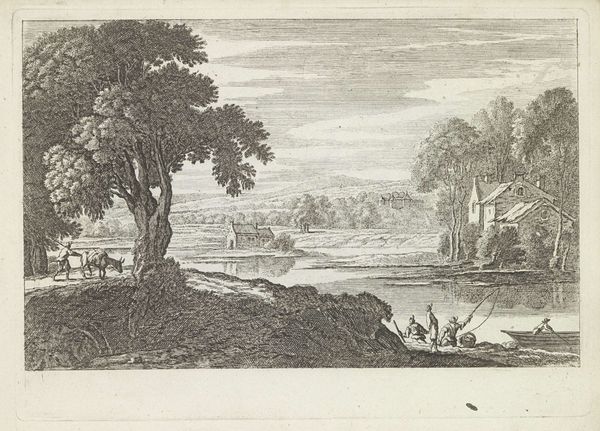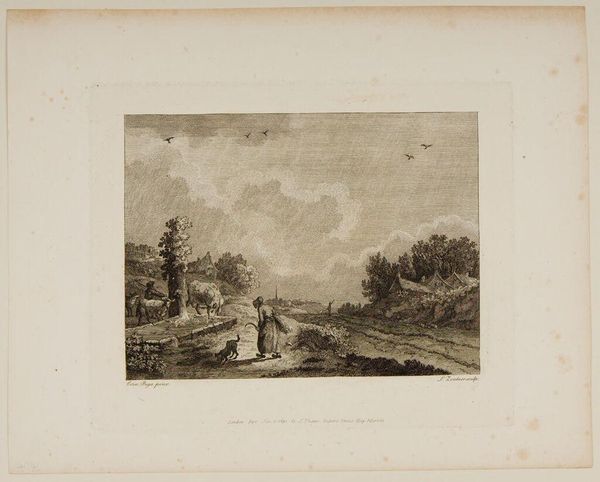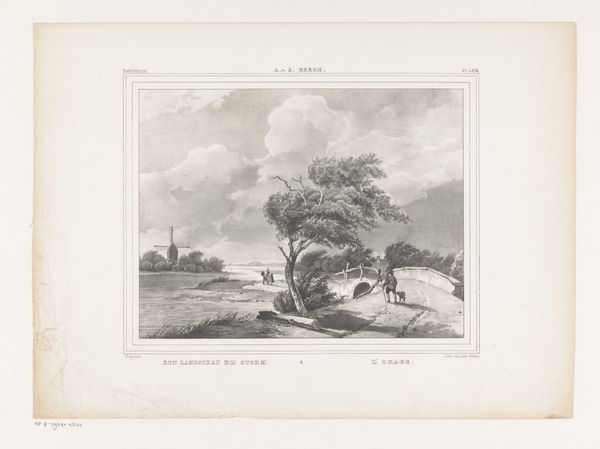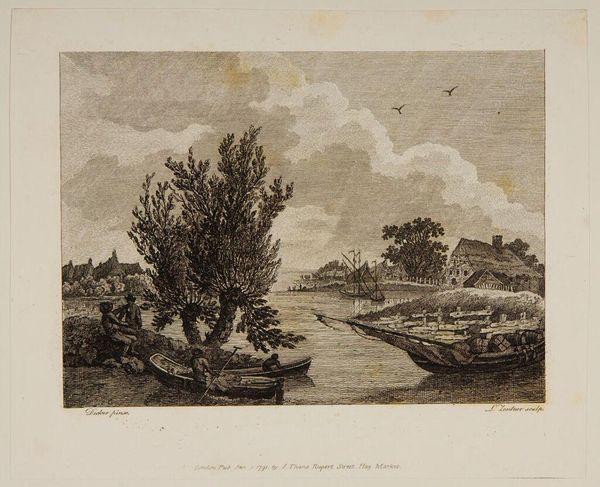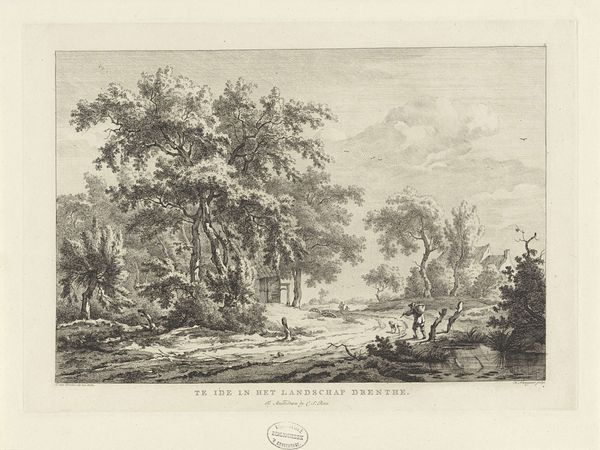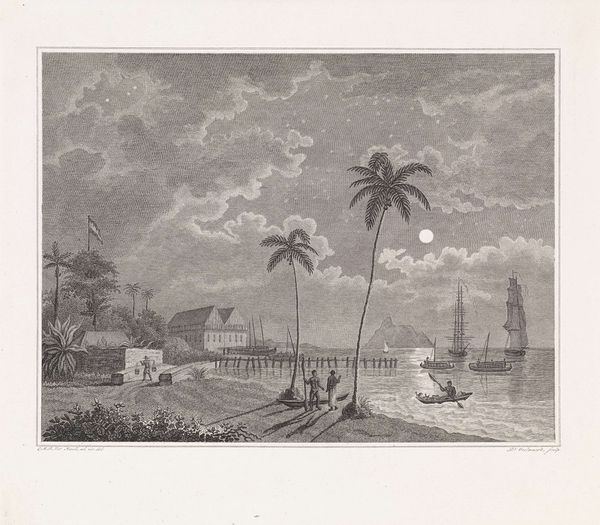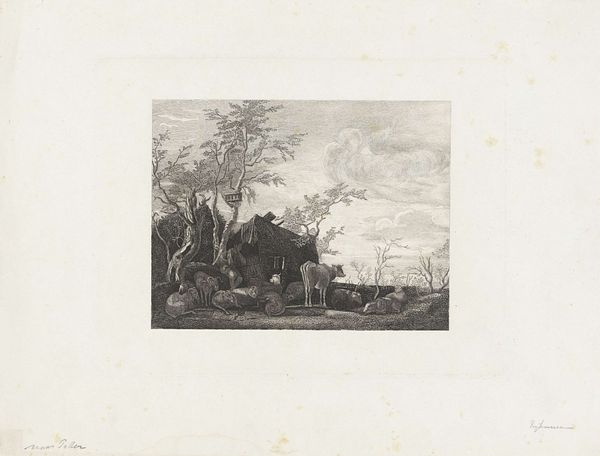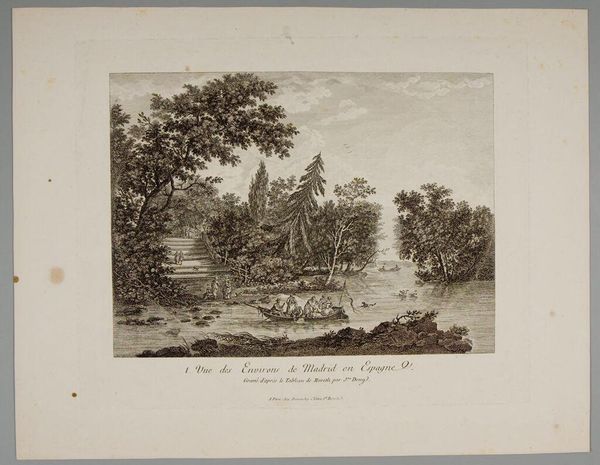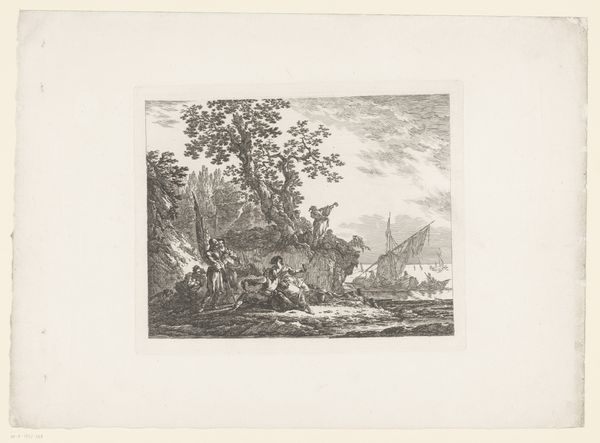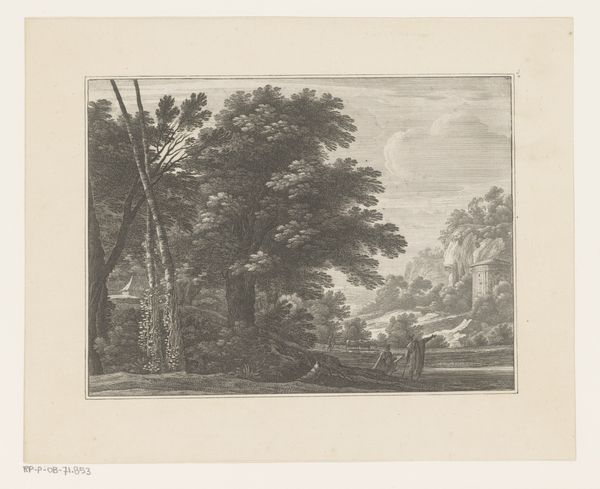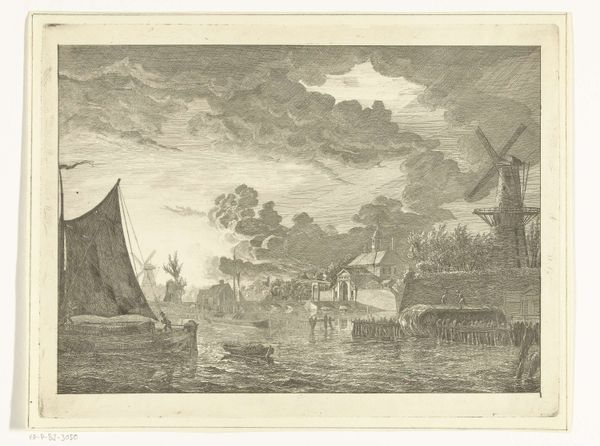
drawing, print, engraving
#
pencil drawn
#
drawing
# print
#
old engraving style
#
landscape
#
romanticism
#
engraving
#
realism
Dimensions: height 227 mm, width 277 mm
Copyright: Rijks Museum: Open Domain
Editor: Here we have François Joseph Pfeiffer’s “Tropisch landschap,” created sometime between 1793 and 1835. It appears to be an engraving or print depicting a tropical scene with figures near a boat and a rudimentary shelter. I’m immediately drawn to the contrast between the detailed foliage and the sketchier rendering of the sky. What stands out to you? Curator: Well, I immediately think about the materiality of the print itself. This wasn’t a mass-produced image in our modern sense. Think of the labour involved in the engraving process, the access to materials, the social class of those depicted versus those producing and consuming such images. How does this affect our understanding of ‘landscape’ as a genre here? Editor: That's fascinating. So, you're less interested in the depicted scene and more in how it came to be represented and consumed? Does the type of paper it's printed on affect our perception, too? Curator: Absolutely. The paper, the ink, the press – they all speak to the means of production and distribution. The romantic idealization of a ‘tropical landscape’ gets complicated when we consider the systems and economics that allowed its creation. What about the people depicted? Who are they? Are they being accurately represented, or romanticized through a European lens? Editor: That's true, it raises questions about whose perspective is being privileged here. It's like the print itself becomes a commodity embedded in a whole network of colonial power. Curator: Exactly! This "landscape" is not just an image; it's an artifact of labor, trade, and colonial vision. The production, not the scene itself, tells a story. Editor: I see it now. I initially focused on the subject matter, but understanding its creation forces a deeper analysis of the art's socio-economic context. Thanks for this materialist lens! Curator: My pleasure. Always consider what the means of making can tell us!
Comments
No comments
Be the first to comment and join the conversation on the ultimate creative platform.

